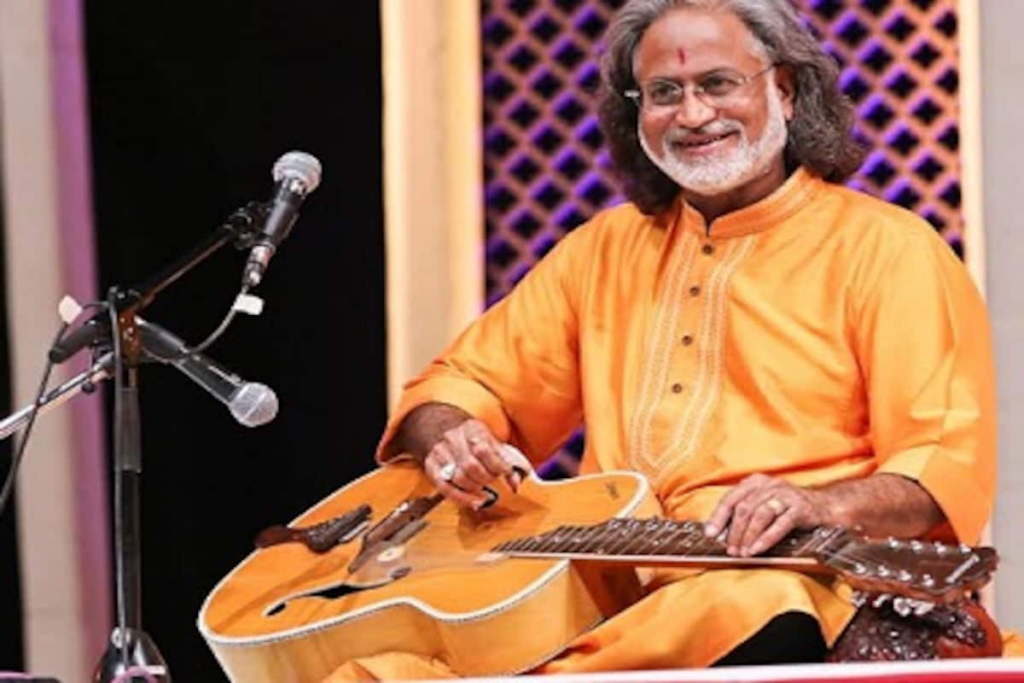Hindustani Classical Music is the classical music of northern regions of the Indian subcontinent. It may also be called North Indian classical music or, in Hindustani, Shastriya Sangeet.

Its origins date from the 12th century CE, when it diverged from Carnatic music, the classical tradition in South India.

Hindustani Classical Music arose in the Ganga-Jamuni Tehzeeb, a period of great influence of Perso-Arabic arts in the subcontinent, especially the Northern parts.

This music combines the Indian classical music tradition with Perso-Arab musical knowledge, resulting in a unique tradition of Gharana system of music education.
A Raga or Raag is a melodic framework for improvisation akin to a melodic mode in Indian classical music.
The Rāga is a unique and central feature of the classical Indian music tradition, and as a result has no direct translation to concepts in classical European music.
Each Raga is an array of melodic structures with musical motifs, considered in the Indian tradition to have the ability to “colour the mind” and affect the emotions of the audience.
Each raga provides the musician with a musical framework within which to improvise.
Improvisation by the musician involves creating sequences of notes allowed by the rāga in keeping with rules specific to the raga.
Rāgas range from small Rāgas like Bahar and Shahana that are not much more than songs to big Rāgas like Malkauns, Darbari and Yaman, which have great scope for improvisation and for which performances can last over an hour.
Rāgas may change over time, with an example being Marwa, the primary development of which has been going down into the lower octave, in contrast with the traditional middle octave.
Each Rāga traditionally has an emotional significance and symbolic associations such as with season, time and mood. The Rāga is considered a means in the Indian musical tradition to evoking specific feelings in an audience.
Hundreds of Rāga are recognized in the classical tradition, of which about 30 are common, and each Rāga has its “own unique melodic personality”.
There are two main classical music traditions, Hindustani (North Indian) and Carnatic (South Indian), and the concept of Raga is shared by both.
Rāga are also found in Sikh traditions such as in Guru Granth Sahib, the primary scripture of Sikhism. Similarly, it is a part of the Qawwali tradition in Sufi Islamic communities of South Asia.
Some popular Indian film songs and Ghazals use Rāgas in their composition.
Every raga has a Swara (a note or named pitch) called Shadja, or adhara sadja, whose pitch may be chosen arbitrarily by the performer. This is taken to mark the beginning and end of the Saptak (loosely, octave).
The raga also contains an adhista, which is either the swara Ma or the swara Pa. The adhista divides the octave into two parts or Anga – the Purvanga, which contains lower notes, and the Uttaranga, which contains higher notes.
Every raga has a Vadi and a Samvadi. The Vadi is the most prominent swara, which means that an improvising musician emphasizes or pays more attention to the vadi than to other notes.
The Samvadi is consonant with the Vadi (always from the Anga that does not contain the Vadi) and is the second most prominent swara in the Raga.
Kirwani is one of the Raagas of Hindustani Classical Music. A few YouTube videos on this Raaga by Maestros is being shared herewith for my readers :


